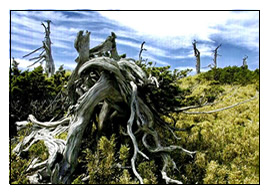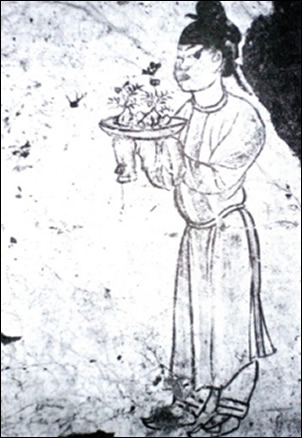BONSAI THROUGH HISTORY
The earliest illustration of a penjing is found in the Qianling Mausoleum murals at the Tang-dynasty tomb of Crown Prince Zhanghuai, dating to 706 depicting ladies-in-waiting offering gifts of miniature rockery landscapes with small plants in shallow dishes, suggests that bonsai existed even earlier than the eighth century in China.
Shallow porcelain bowls had been made in what we now call China for at least 5,000 years. Then the principal of the Chinese Five Agents (water, fire, wood, metal and earth) led to the idea of miniature replicas of nature. By creating them, albeit on a reduced scale, you could gain control of their mystical properties. This was the start of miniature landscapes and subsequently miniature trees.
The earliest collected and then containerised trees are believed to have been peculiarly shaped and twisted specimens from the wild. They were 'sacred' - these trees could not be used for any practical, ordinary purposes. Their strange forms and shapes were reminiscent of yoga-type postures that repeatedly bent back on themselves, recirculating vital fluids said to promote long life.


China is a huge country with a great diversity of landscapes. Over a long period of time many different styles evolved. Earthenware and ceramic containers for the trees replaced the porcelain ones and trees were displayed on wooden stands. Attempts were made to shape the trees using bamboo frames and lead strips. By the sixteenth century they were referred to as 'pun tsai' or 'tray plantings'. The name pun ching, now called ‘penjing’, did not come into usage until the seventeenth century. Originally, only the elite of society practised pun-tsai, using native-collected specimens, and the trees were given throughout China as very special gifts.



